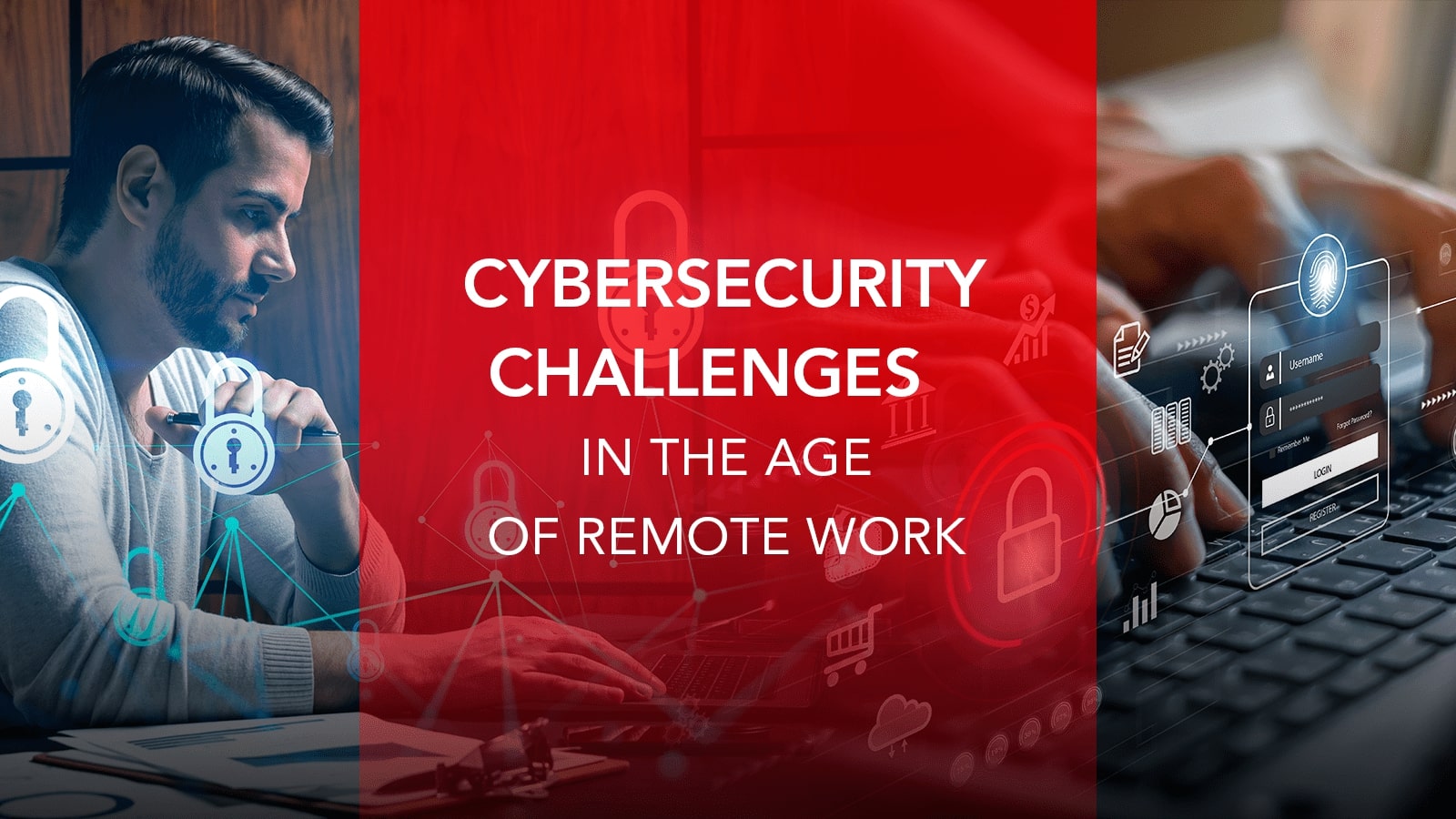Cybersecurity Risks and Solutions for Remote Work in 2025
Cybersecurity Risks in Remote Work

2020 marked a significant change in how people work, pushing many businesses to adapt to remote work. By the end of 2023, approximately 40% of U.S. job seekers preferred fully remote roles, with 33% seeking hybrid arrangements. High-growth companies are increasingly adopting hybrid or “productivity anywhere” models, with about 63% of them doing so. This trend is mirrored in Europe, where data from the Okta Hybrid Work Report 2023 shows that 43% of companies allow remote work for some days.
Top Cybersecurity Risks of Remote Work
1. Larger Attack Surface Increases Vulnerabilities
The increase in remote work expands the attack surface for cybercriminals. Every device connected to the Internet—phones, tablets, laptops—can be targeted. Cybercriminals exploit these multiple entry points to access an organization’s network. VPNs, while intended to provide secure access, can inadvertently create additional vulnerabilities. In 2023, there was a notable 47% rise in VPN vulnerabilities compared to the previous two years, highlighting the need for improved cybersecurity measures.
2. Zero-Day Vulnerabilities in VPNs
According to the 2024 VPN Risk Report by Cybersecurity Insiders, 80% of companies depend on VPNs for remote access. However, zero-day vulnerabilities pose significant risks since these are security gaps that vendors have not yet identified. For instance, in January 2024, Ivanti disclosed critical vulnerabilities in its VPN products that could allow unauthorized commands on networks.
3. Hybrid Work Environments and Backdoor Vulnerabilities
Cybercriminals often leave backdoors in networks they infiltrate, allowing repeated access even after vulnerabilities are patched. The SolarWinds Orion attack is a prime example of how prolonged access can lead to significant data breaches.
Enhancing Remote Work Cybersecurity
Organizations must adapt their cybersecurity strategies to the evolving landscape of remote work. Traditional defenses like firewalls and VPNs are becoming less effective against sophisticated attacks.
Anapaya GATE on the SCION Internet
Anapaya GATE introduces a new security approach that allows businesses to hide critical services from the general Internet while selectively granting access to employees. This shift reduces exposure to cyber threats while improving security for remote work.
Key Benefits of Anapaya GATE
- DDoS Attack Prevention: Services accessed only from designated networks reduce DDoS attack risks.
- Reduced Visibility to Cybercriminals: Selective access keeps certain services “invisible” to attackers.
- Enhanced Resilience: SCION’s network enables stable access even during attacks.
Security Threats Facing Contact Centers in 2025
Contact centers manage sensitive data and are frequently targeted by malicious actors. Here are the biggest threats they face in 2025:
1. Voice Deepfake Technology
Voice deepfake technology poses a significant threat as attackers impersonate customers or authority figures. Advanced detection tools like Pindrop’s deepfake detection can help mitigate this risk.
2. Distributed Denial of Service (DDoS) Attacks
DDoS attacks disrupt services by overwhelming contact center networks. Reducing the attack surface and using DDoS defense tools can help protect against these threats.
3. Voice Phishing
Voice phishing (vishing) continues to be a serious issue. Implementing advanced voice authentication methods, like Pindrop Passport®, can enhance security against vishing attacks.
4. Ransomware
Ransomware encrypts critical data, causing operational disruptions. A proactive strategy that includes robust data backup and advanced anti-malware solutions is essential.
5. Insider Threats
Insider threats, where employees misuse their access, can lead to breaches. Implementing access control systems and regular audits can help mitigate these risks.
Cybersecurity Challenges in the Age of Remote Work

With remote work becoming a substantial part of the workforce, organizations face numerous cybersecurity challenges:
Increased Attack Surface
Remote work has expanded potential entry points for hackers. Employees accessing networks from personal devices on unsecured networks are common vulnerabilities.
Use of Unsecured Home Networks
Weak home Wi-Fi protocols increase risks of unauthorized access. Studies indicate that a significant percentage of users practice poor password hygiene, contributing to data breaches.
Rise in Phishing and Social Engineering Attacks
Phishing attacks often originate from emails or social networks. Advanced training for employees is crucial to recognize and report suspicious requests.
Shadow IT
Unapproved applications and devices used for business purposes create vulnerabilities. IT teams must maintain visibility over all hardware and software in use.
Endpoint Security Risks
Using robust antivirus and endpoint detection software is essential to mitigate risks from malware and ransomware.
Regulatory and Compliance Challenges
Organizations in regulated industries face heightened responsibilities to protect sensitive data, complicating compliance efforts.
Psychological Factors and Human Error
Human errors, often driven by stress or inadequate training, can lead to security breaches. Regular training can help mitigate this risk.
Lack of Cybersecurity Training
Many employees lack the necessary training to navigate cybersecurity risks. Implementing comprehensive cybersecurity training is critical.
Addressing Cybersecurity Challenges
To tackle these challenges, organizations should:
- Implement a Zero Trust Model for strict identity verification.
- Use advanced endpoint security solutions for real-time threat detection.
- Deploy VPNs and Secure Access Service Edge (SASE) frameworks for secure access.
- Utilize Multi-Factor Authentication (MFA) for added security.
- Conduct regular cybersecurity audits to identify and mitigate vulnerabilities.
Artificial intelligence can assist in conducting these audits and improving threat detection and response capabilities.
Role of Leadership in Cybersecurity
Leadership plays a crucial role in fostering a culture of cybersecurity awareness. Regular training and resource allocation are necessary to enhance the organization's cybersecurity posture.
Evolving Regulations for Remote Work
As remote work continues, regulatory agencies are likely to impose new compliance mandates. Preparing now for these changes is vital for protecting organizational assets.
Organizations need to view cybersecurity as an ongoing process rather than a one-time solution, ensuring they remain resilient against emerging threats.

